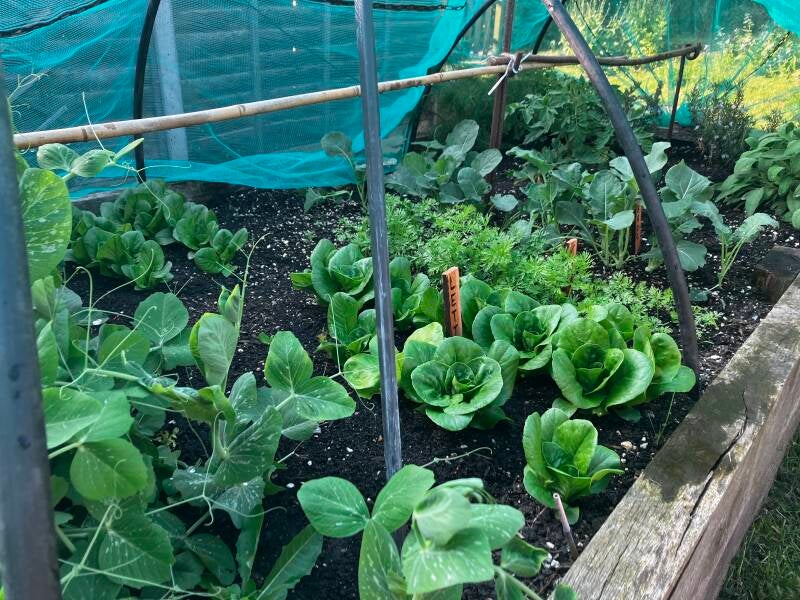
Organic Kitchen Gardens.
Creating "no-dig" legacy gardens - depending upon what level of support you require, we can provide consultation, design and fruit & vegetable garden landscaping services, to anyone looking to grow their own food, in a sustainable, organic, all natural, resilient, regenerative and generally more enjoyable way. We serve;
- Private house and gardens
- Restaurants
- Hotels & B&Bs
- Glamping sites
- Small farms & "farmsteads"
- Community farms and allotments.
- ......generally anyone with an outdoor space.....
Our No-dig beds.
You would be surprised how much fruit and vegetables you can grow in a small garden. One of the best solutions are raised beds. Once filled with many cubic meters of fertile black soil, it's a simple matter of planting and sowing as you see fit. These can be designed and built to fit your garden and added upon as your household kitchen needs require. Benefits of our raised beds over others include, to name a few:
- Deep & fertile.
- Lower maintenance.
- Permanent and solid wall options - Natural and local timber, Terra-cotta or stone options.
- Fewer naturally occurring weeds.
- Easy ergonomic management - less bending over and reaching. Perch on your beds if you like - very important.
- More protection from pests, dog wee and frost.
- Easily cover with netting (again we can supply plastic free options) or retrofit with a timber frame glasshouse.
Photos of timber raised beds kitchen garden projects:
Market & Restaurant gardens:
We enjoy establishing larger scale Organic Kitchen garden models, that aren't particularly space limited, which require a different kind of no-dig approach than raised high sided beds. Low-level, no-dig beds still require a large input of compost, but differently we use Woodchip for the pathways, which in turn adds to the desired fungal and microbial life in the beds. Your Organic Kitchen Garden model would be sustainably designed around variables unique to your plot layout and any pre-existing model, such as;
- Landscape,
- Logistics and inputs,
- Propagation preferences,
- kitchen or market needs,
- Irrigation,
- Machinery,
- Gardener numbers,
- Future development,
- Cover-crops or green manures,
- Livestock.























